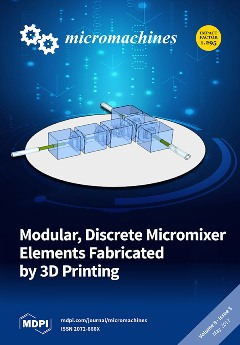A deep knowledge of the hydrodynamics of two-phase flow in millichannels and microchannels is relevant to the design and control of micro structured equipment. While there is plenty of work published in this area, there is a lack of studies over a wide range of dimensionless numbers and some factors have not been properly addressed, such as the role of the Reynolds number, the features of recirculation regions in the liquid slug and the liquid film development length. Therefore, a wide range parametric study of isolated gas Taylor bubbles flowing in co-current with liquid in circular milli- and microchannels is presented, in a wide range of Capillary (Ca
B) (0.01–2) and Reynolds numbers (Re
B) (0.01–700). The shape and velocity of the bubbles are, together with the flow patterns in the flowing liquid, analyzed and compared with numerical and experimental correlations available in the literature. For low values of Ca
B, the streamlines (moving reference frame (MRF)) in the liquid slug show semi-infinite recirculations occupying a large portion of the cross-section of the channel. The mean velocity of the fluid moving inside the external envelope of the semi-infinite streamlines is equal to the bubble velocity. For high values of Ca
B, there are no recirculations and the bubble is moving faster or at least at the velocity of the liquid in the center of the tube; this flow pattern is often called bypass flow. The results also indicate that the liquid film surrounding the bubbles is for low Ca
B and Re
B numbers almost stagnant, and its thickness accurately estimated with existing correlations. The stagnant film hypothesis developed provides an accurate approach to estimate the velocity of the bubble, in particular for low values of Ca
B. The asymptotic behavior of the studied parameters enables the extrapolation of data for Ca
B lower than 0.01. In addition to the simulations of isolated bubbles, simulations with two consecutive bubbles were also carried out; coalescence was only observed in very specific conditions. The results obtained in this study are directly applicable to co-current slug flow in milli- and microchannels for 0.1 < Re
B < 1000 and 0.02 < Ca
B < 2.
Full article






